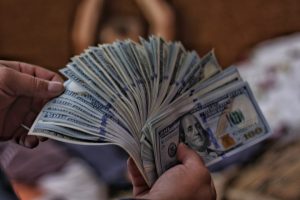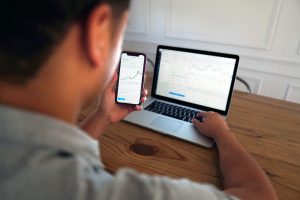Forex sessions refer to the different trading hours of the major financial centers around the world. As the Forex market operates 24 hours a day, traders need to understand the different sessions and how to trade them effectively. In this article, we will discuss how to trade forex sessions and what factors to consider when trading in different time zones.
The Forex Market
The Forex market is the largest financial market in the world, with a daily turnover of over $6 trillion. It is a decentralized market where currencies are traded 24 hours a day, five days a week. The market is open from Sunday evening to Friday afternoon, with the major financial centers operating in different time zones.
Forex Sessions
There are four major Forex sessions: the Sydney session, the Tokyo session, the London session, and the New York session. Each session has its own characteristics and trading opportunities.
The Sydney Session
The Sydney session starts at 10 pm GMT and ends at 7 am GMT. It is the first session of the trading week and is characterized by low liquidity and volatility. The major currency pairs traded during this session are the AUD/USD, NZD/USD, and USD/JPY.
Traders should be cautious when trading during this session, as the low liquidity can lead to wider spreads and higher slippage. However, there are still trading opportunities during this session, especially for traders who prefer to trade the AUD and NZD pairs.
The Tokyo Session
The Tokyo session starts at midnight GMT and ends at 9 am GMT. It is the second session of the trading day and is characterized by high liquidity and volatility. The major currency pairs traded during this session are the USD/JPY, EUR/JPY, and AUD/JPY.
Traders who prefer to trade the JPY pairs should be active during this session. The high volatility can lead to significant price movements, providing traders with plenty of trading opportunities. However, traders need to be aware of the Bank of Japan’s interest rate decisions and economic data releases, which can cause sudden volatility in the market.
The London Session
The London session starts at 8 am GMT and ends at 5 pm GMT. It is the most active session of the trading day and is characterized by high liquidity and volatility. The major currency pairs traded during this session are the EUR/USD, GBP/USD, and USD/CHF.
Traders who prefer to trade the EUR and GBP pairs should be active during this session. The high liquidity and volatility can provide traders with plenty of trading opportunities, especially during the overlap with the New York session. However, traders need to be aware of the Bank of England’s interest rate decisions and economic data releases, which can cause sudden volatility in the market.
The New York Session
The New York session starts at 1 pm GMT and ends at 10 pm GMT. It is the last session of the trading day and is characterized by high liquidity and volatility. The major currency pairs traded during this session are the EUR/USD, GBP/USD, and USD/JPY.
Traders who prefer to trade the USD pairs should be active during this session. The high liquidity and volatility can provide traders with plenty of trading opportunities, especially during the overlap with the London session. However, traders need to be aware of the Federal Reserve’s interest rate decisions and economic data releases, which can cause sudden volatility in the market.
Factors to Consider when Trading Forex Sessions
When trading Forex sessions, traders need to consider various factors, including:
1. Market liquidity: The higher the market liquidity, the easier it is to enter and exit trades. Traders should be active during the sessions with high liquidity.
2. Volatility: High volatility can provide traders with plenty of trading opportunities, but it can also increase the risk of sudden price movements. Traders should be aware of the economic data releases and other events that can cause sudden volatility in the market.
3. Time zone: Traders need to be aware of the time zone they are trading in and adjust their trading strategy accordingly. For example, traders in the Asian time zone may prefer to trade the JPY pairs during the Tokyo session, while traders in the European time zone may prefer to trade the EUR and GBP pairs during the London session.
4. Trading style: Traders need to choose a trading style that suits their personality and trading goals. For example, a day trader may prefer to trade the London and New York sessions, while a swing trader may prefer to trade the Asian sessions.
Conclusion
Trading Forex sessions requires a good understanding of the different trading hours and the factors that affect market liquidity and volatility. Traders need to be aware of the economic data releases and other events that can cause sudden volatility in the market. By considering these factors, traders can develop a trading strategy that suits their personality and trading goals.





